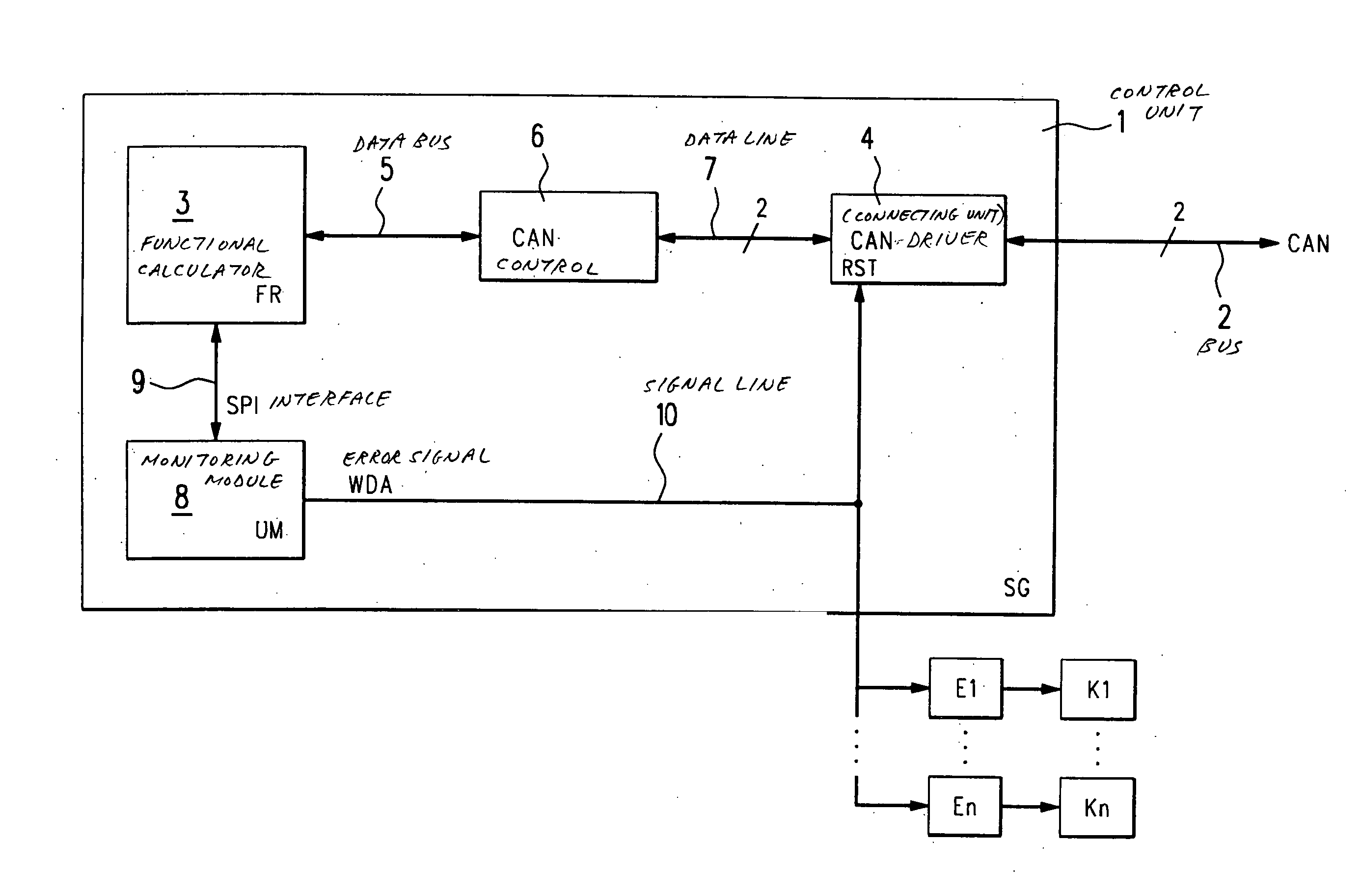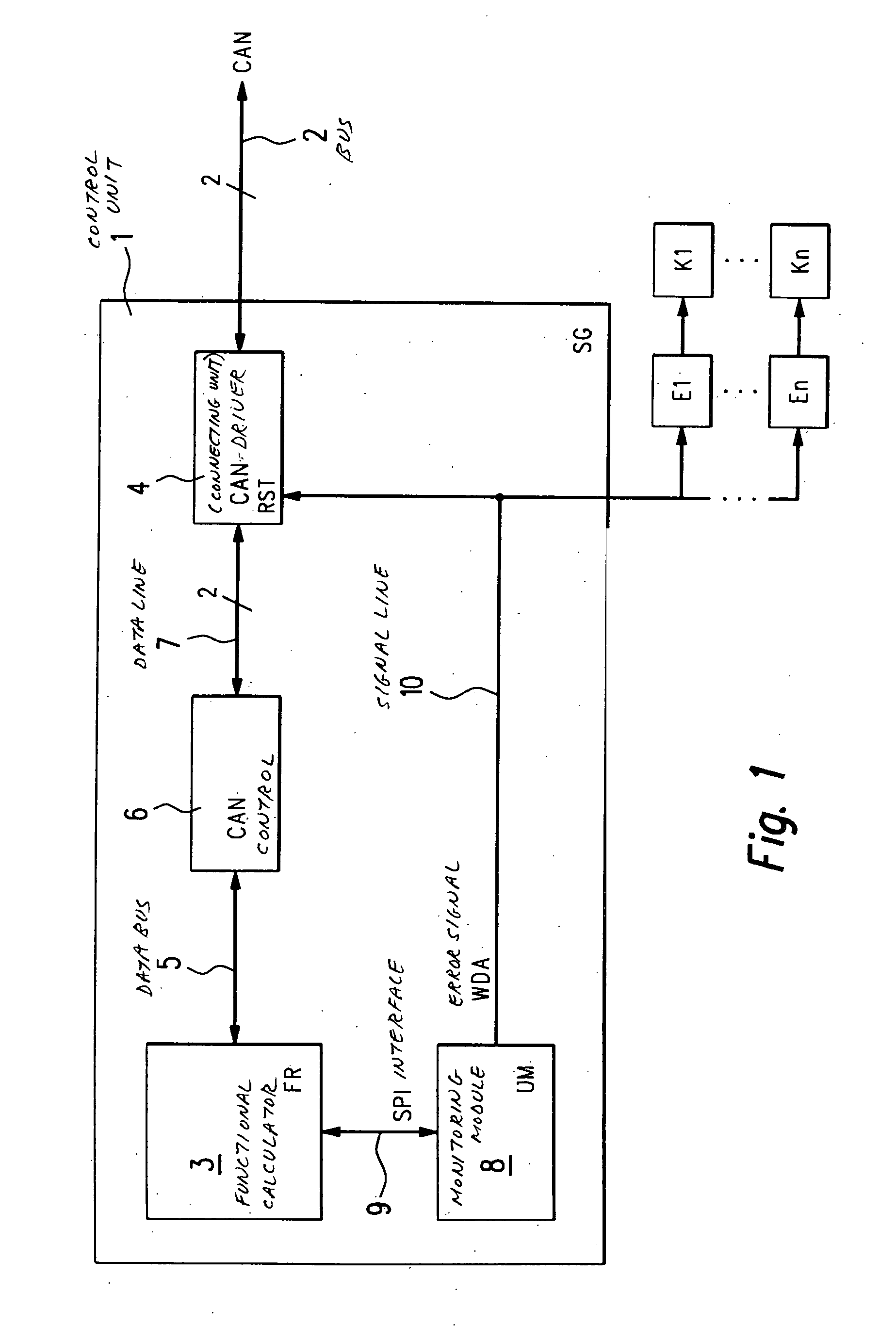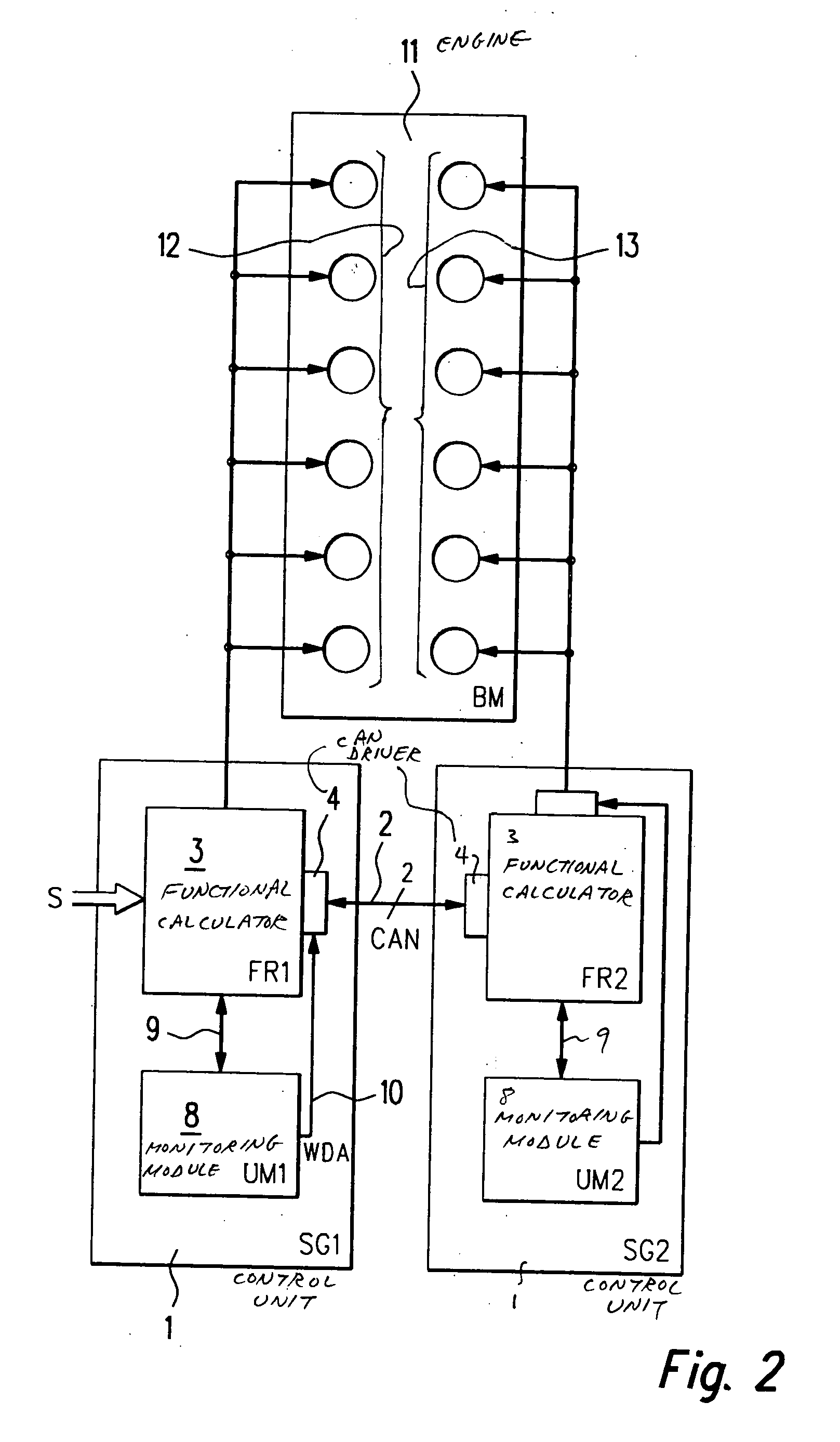[0013] According to one example embodiment of the present invention, it is provided that the functional unit is in contact with several bus systems and that the error
signal is applied to connecting units of several of the bus systems. The
advantage of the present invention, that the forwarding of data by an erroneous functional unit is able to be prevented safely and reliably without the use of additional hardware, such as, for instance, additional switching elements for interrupting the connection between erroneous functional unit and bus system, is especially useful when the erroneous functional unit is in contact not only with one but with several bus systems, via which data are able to be sent to other functional units. In all bus systems that are connected to the erroneous functional unit and which are to be deactivated in case of an error, the error
signal of the monitoring unit is conducted to the connecting units.
Bus systems which are only used for transmitting data of non-safety-relevant operational sequences (e.g., of comfort functions), do not necessarily have to be switched off in case of an error of the functional unit.
[0014] Furthermore, according to an example embodiment of the present invention, it is provided that the error
signal be applied at the outputs of components whose operational sequences are controlled or regulated by the erroneous functional unit. These components are, for example, outputs of the ignition, the
fuel injection and / or the
throttle valve of an
internal combustion engine. The aim of this measure is to bring the
internal combustion engine safely to a stop, in case of an error in the controlling or regulating functional unit.
[0015] It may be advantageous that, after the detection of an error of the functional unit, the functional unit continues to be monitored by the monitoring unit, and the at least one connecting unit is activated again in case a
proper function of the functional unit is detected. This renewed activation of the connecting units is possible at any time in the present invention. In contrast, in the prior art, in which, in case of an error, a reset of the erroneous functional unit is executed, a proper functioning of the functional unit could only be detected subsequent to the reset and the running up of the functional unit. Consequently, using the present invention, one may improve not only the safety of an integrated network which includes several functional units that are in contact with one another via a bus system, but also the availability of the integrated network, since the proper functioning of a functional unit may be detected particularly rapidly.
[0016] The monitoring unit has means for forming and emitting an error signal which assumes different values as a function of whether or not the monitoring unit has detected an error of the functional unit, and that the error signal is conducted to the at least one connecting unit and that the at least one connecting unit should be able to be deactivated by the error signal that is present, if the error of the functional unit was detected. The device corresponds, for example, to an integrated network that includes several functional units which are in contact with one another via a bus system.
[0017] According to one embodiment of the present invention, it is provided that the error signal is applied to an enable / disable input of the at least one connecting unit. Alternatively, it is provided that the error signal be conducted to a reset input of the at least one connecting unit.
[0018] The device advantageously includes several functional units which are connected to one another via a bus system, and at least one monitoring unit, the monitoring unit preventing the forwarding of data by a functional unit via the at least one bus system, in case the monitoring unit has detected an error of this functional unit. Such a device corresponds to the so-called multi-
control unit concept that has increasingly been used in motor vehicles recently, in which several control units are put in in parallel to one another to increase computational performance, the individual control units each controlling a certain part of the operational sequences. Thus, for example, in a two-
control unit concept for controlling an 8-cylinder internal
combustion engine, a first control unit is put in for controlling four of the cylinders and a second control unit for controlling the remaining four cylinders. The two control units are in contact with each other via a bus system. Data concerning the operational state of the internal
combustion engine or of the motor vehicle are only supplied to the first control unit, which then passes the data on to the second control unit via the bus system. If the monitoring unit of the first control unit detects an error of the control unit, it deactivates the connecting unit of the bus system to the second control unit, so as to prevent the first control unit from forwarding erroneous data to the second control unit and having the second control unit controlling the remaining four cylinders of the internal
combustion engine in a faulty manner and even possibly having a safety-relevant situation coming about.
 Login to View More
Login to View More  Login to View More
Login to View More 


